“If one more person says ‘Winter Wonderland’….” and he trailed off to silence. I knew the frustration he was feeling—we had been through this for years. I am that person who happily calls this snowy scenario a ‘Winter Wonderland.’ But this was the third day in a row of substantial snow, ice, and sometimes rain—as beautiful as it was, it was also extremely messy and difficult to ‘remove’ from all the places that need to be cleared on a college campus. The snow was heavy, laden with moisture as temperatures hovered for days and nights around the freezing mark. Chris gets up long before the five o’clock hour in order to be on the road—sometimes plunging through unplowed snow, other times following snow plows—to get to work. Then he bundles up to get in the snow removal machine and begins to clear the sidewalks. He and his two full-time workers have a carefully planned ‘execution map’ of their routes. The student workers are taking their finals or have already left for home, so the hand-shoveling gets pushed back on the to-do list. Sometimes the equipment breaks down, and sometimes people all over campus are emailing him to tell him about slippery spots. Welcome to Winter.
Before I worked on our own long driveway of snow removal, I walked out into the black and white Winter Wonderland world. The sky was dark gray and large crystalline flakes fell slowly and softly on the already heavily–flocked trees. It was so incredibly silent. And it felt good—we hardly notice how we are inundated with noise for most of our waking hours and for the toll it takes on our nervous system. Silence is a gift from Mother Nature. But in the midst of the snowing Winter Wonderland was the reality of a black and white world—black tree trunks and branches covered in white snow, black evergreen trees wearing coats of white, the gray sky and white ground.
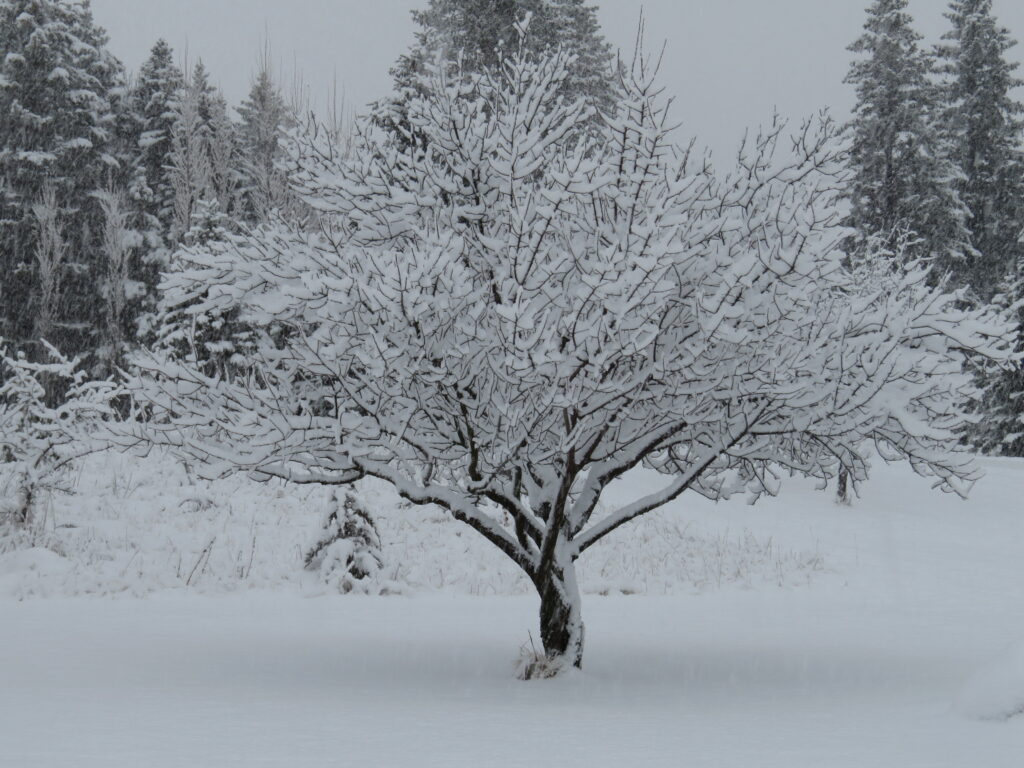
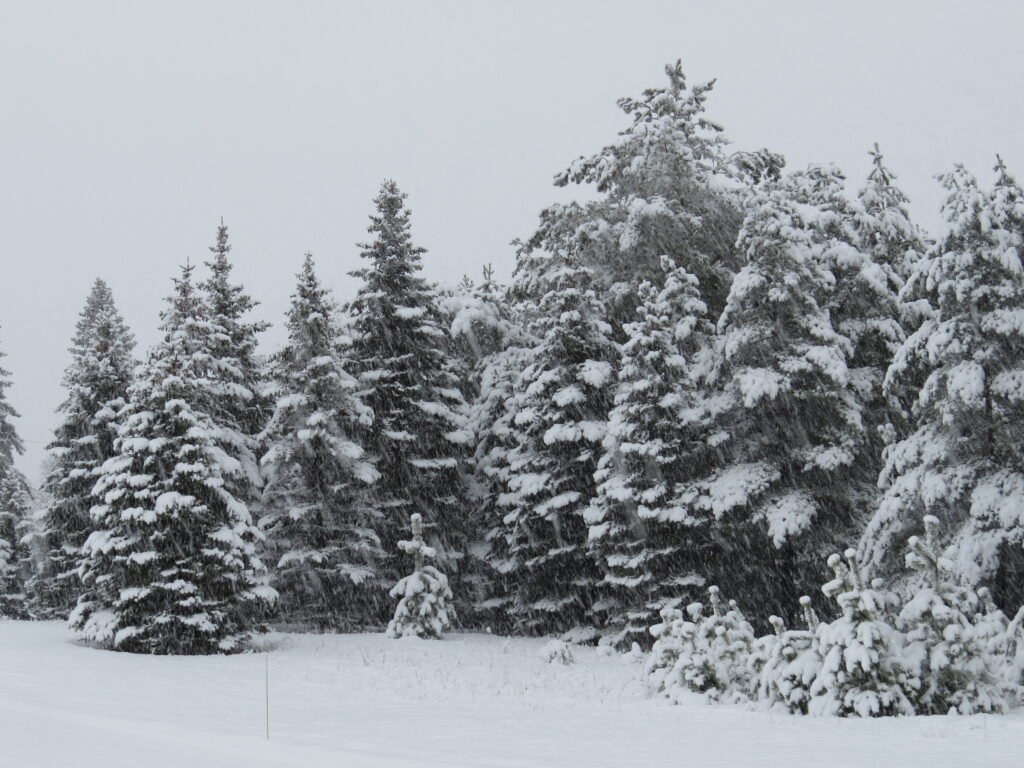
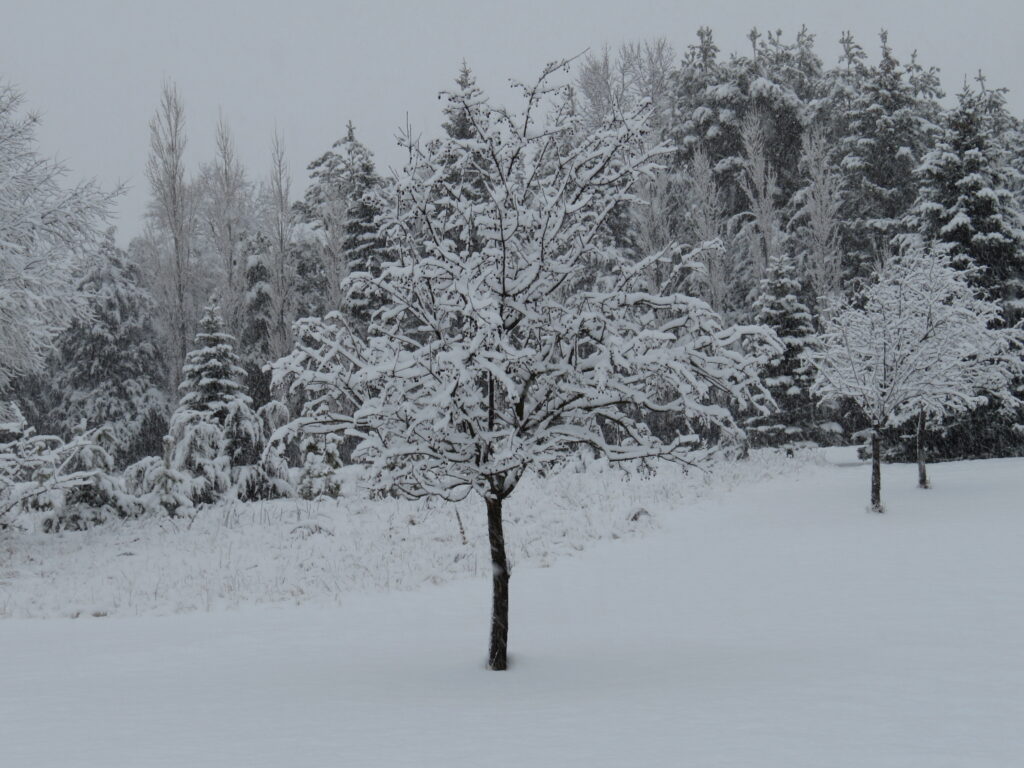
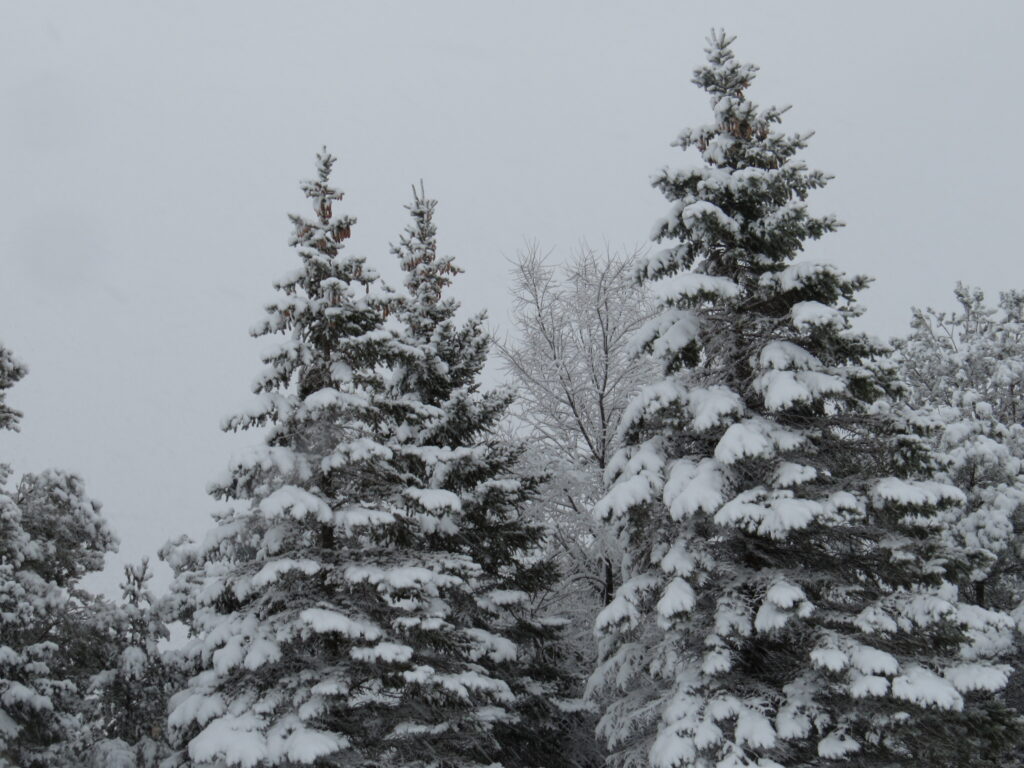
Our vision and perception of what we see in the world is so fascinating to me. In physiology we learn that the retina in our eyes contains specialized cells called rods and others called cones. We are taught that rods are for night vision—they distinguish size, shape, and brightness but do not perceive color. Cones are for day vision, are highly concentrated in the central part of the retina, and distinguish fine details and all the colors we see. Black and white functions, right? Except why do our retinas contain 91 million rods and only 4.5 million cones when we are basically diurnal animals? What are our rods doing on a day like this one when what we ‘see’ looks black and white?
We do see the size and shape of an Elm tree with its fine, lacy branches…
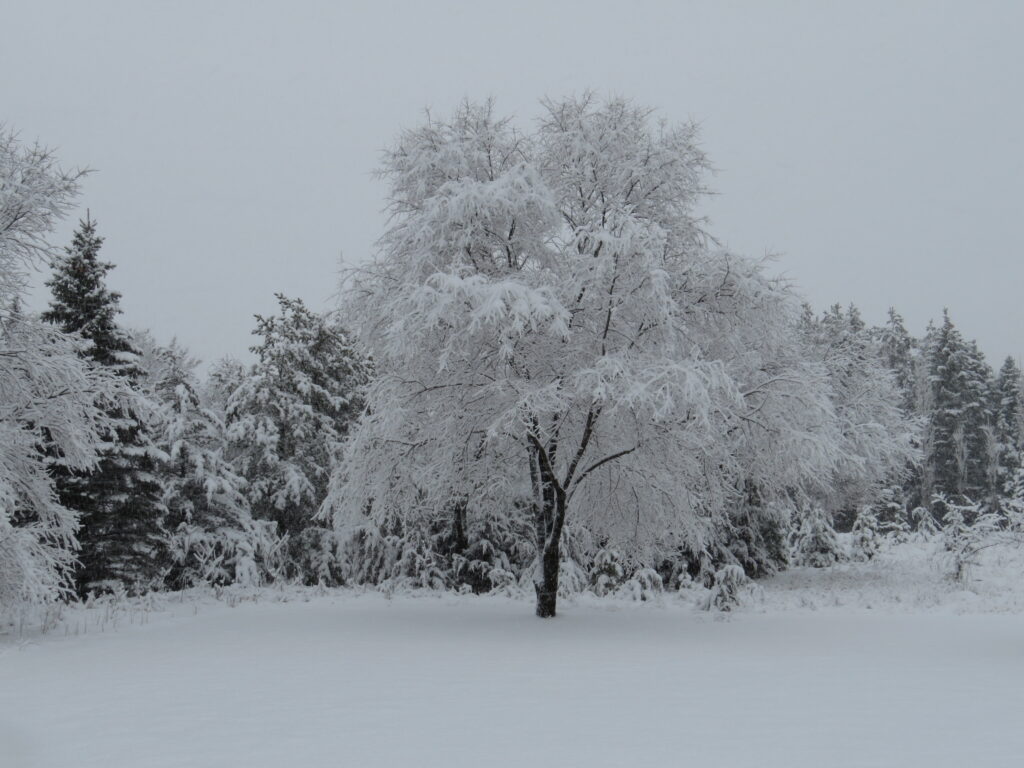
and how these young, squat Jack Pines covered in snow look like toddlers in snowsuits…
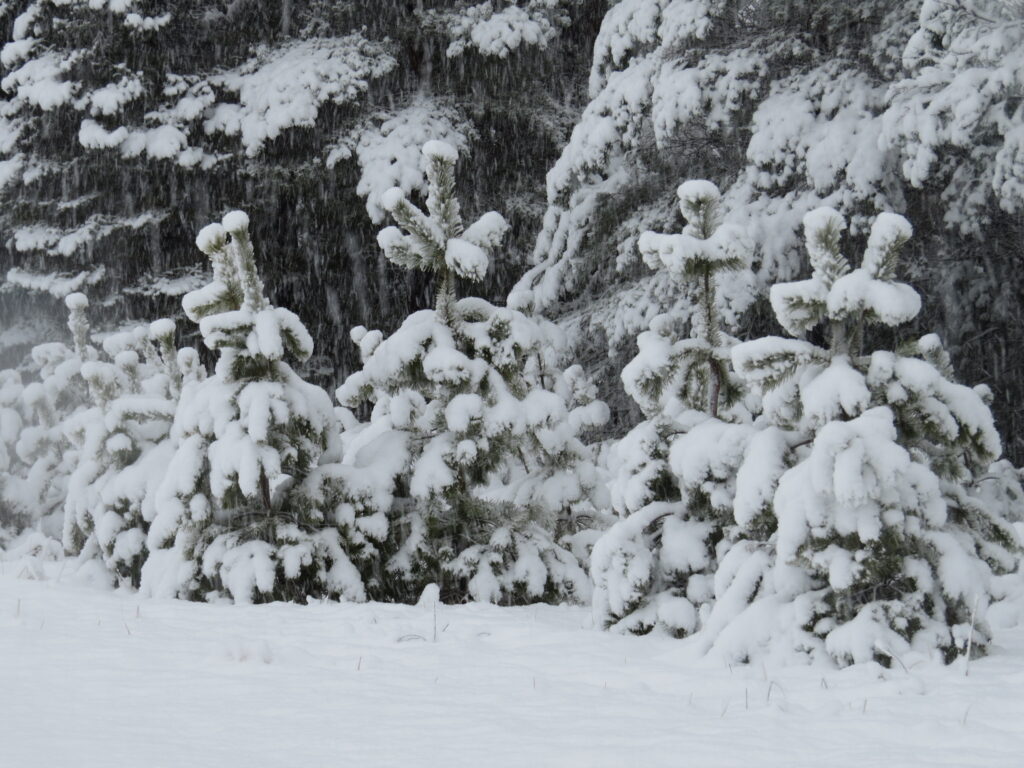
and how the flexible branches of a Paper Birch bend and bow under the weight of the wet snow.
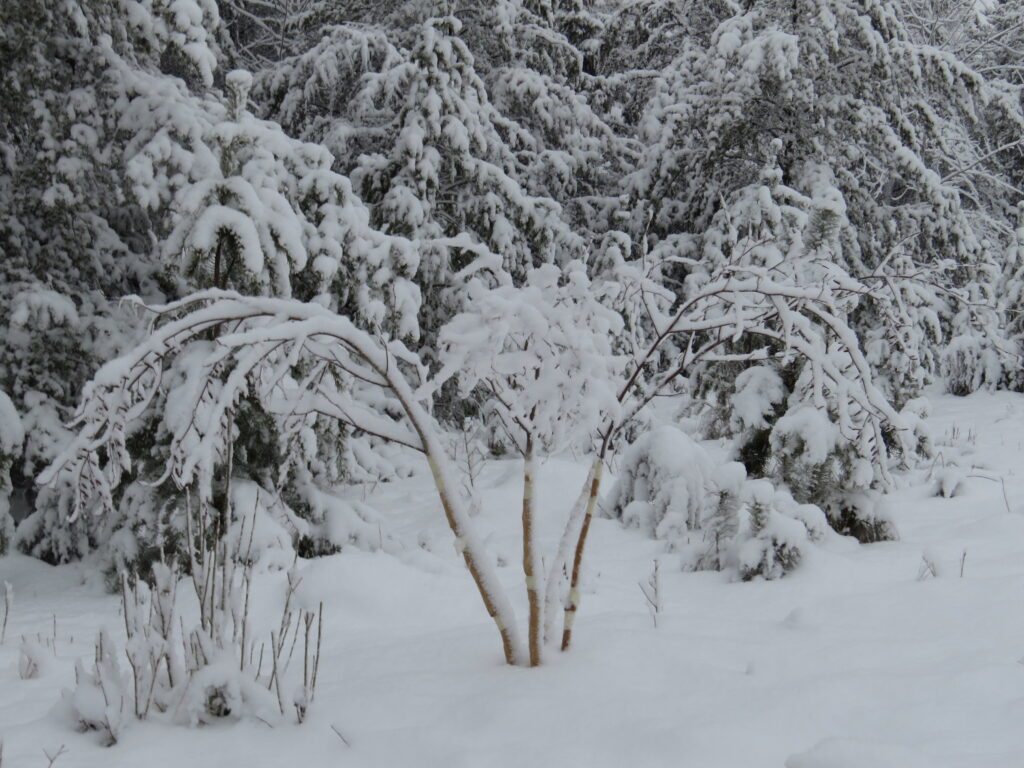
One has to look closely to notice any detail in the black and white snow globe. The snow obscures most of the defining features we see in the other seasons.

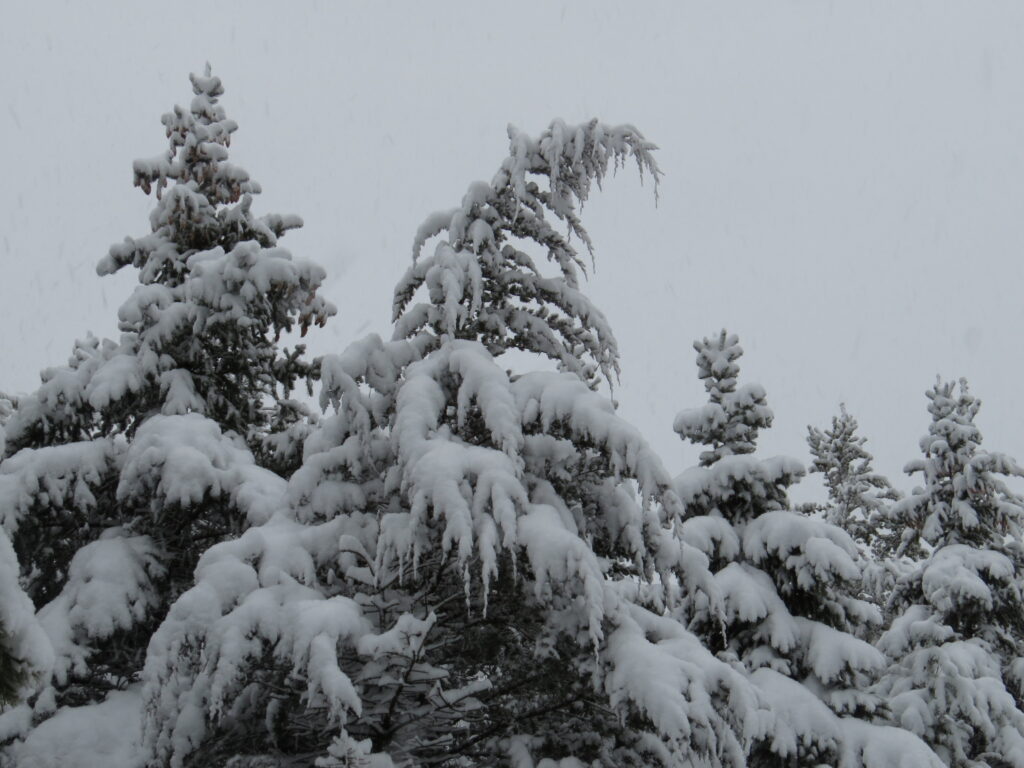

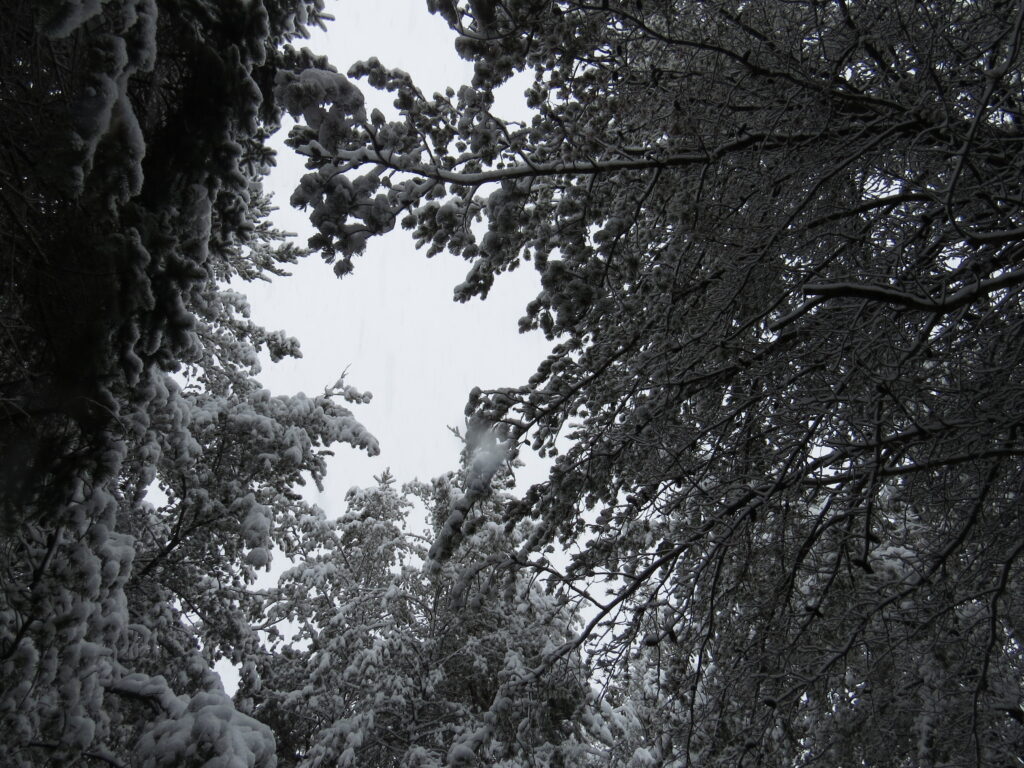
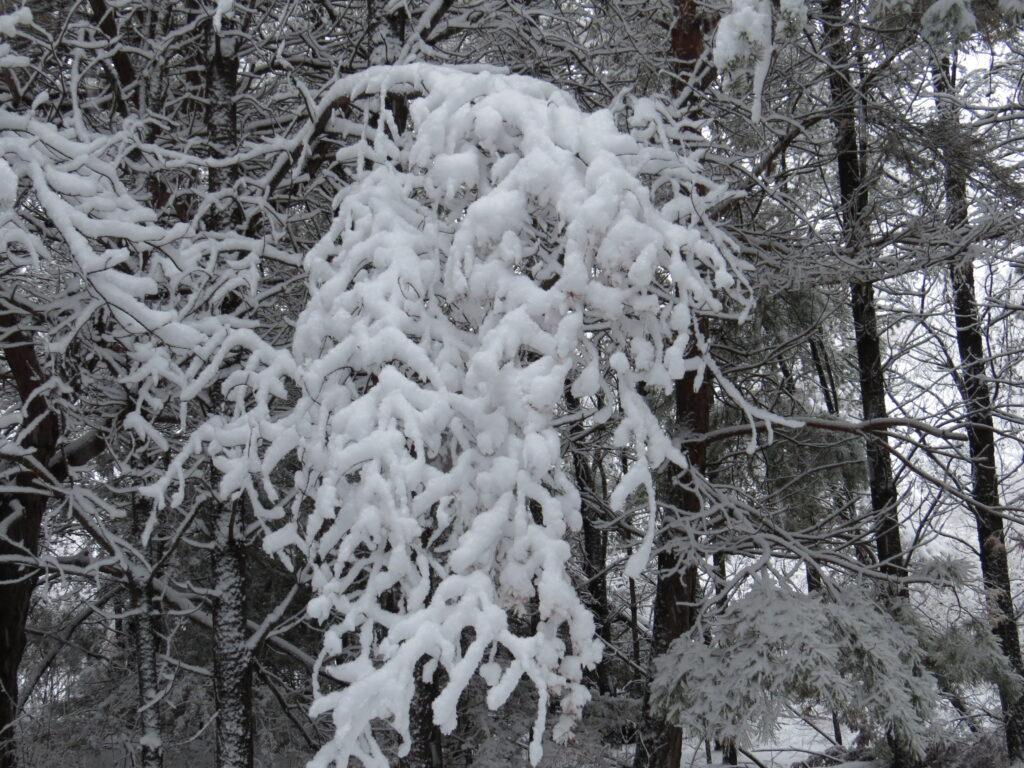


Black and white thinking is an ‘easy’ way of thinking. Things are right or wrong, good or bad, helpful or unhelpful. I’m a pro at it. (And notice I did it with the word ‘easy.’) It’s actually an immature way of thinking that we all go through in our development. As we grow, our developing brains are better able to detect nuances, comparisons, contrasts, subtleties, ‘gray areas,’ diversity, patterns, details, and connections—the ‘cone-like’ qualities. (This is what good education teaches us.) But as ‘mature’ as we are in our adult, educated brains, when we are emotionally triggered by unprocessed traumas and wounds, we revert back to our ‘rod-like’, child-like, black and white thinking. Our primitive reptilian brain takes over—it is ’91 million’ strong compared to our ‘4.5 million’ pre-frontal cortex. We are complex and wonderfully made creatures with both rods and cones, with both limbic and cortical regions of the brain, with both immature and mature skills and qualities. But we do not have to be at the ‘whim’ of our triggering emotions—we can use Mother Nature’s gift of silence to calm our bodies and brains in order to notice details, to see all the colors of our situation, and to know that two opposing things can be true (and okay) at the same time. We’ve had a beautiful Winter Wonderland week and a really messy, difficult, time-consuming clean-up. Welcome to Winter and Life!